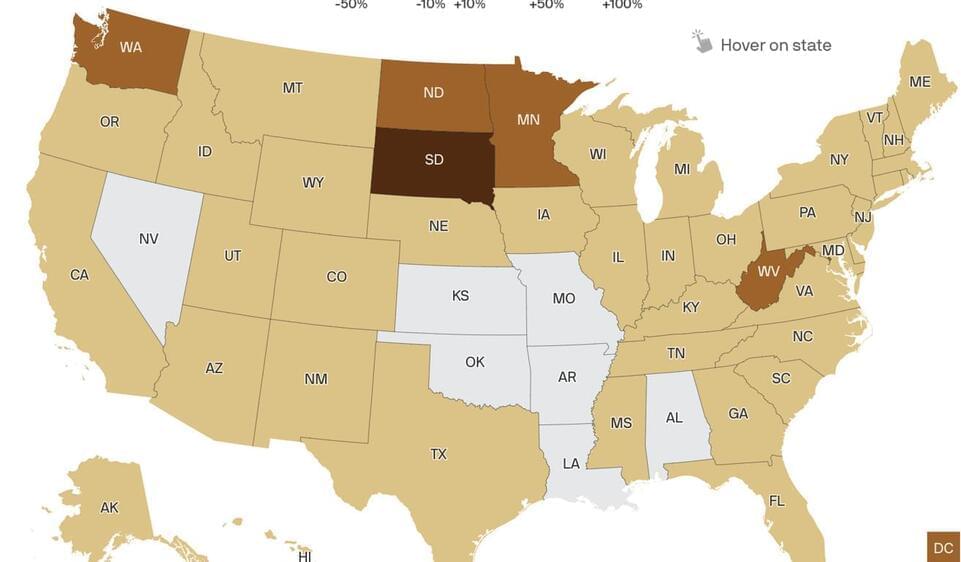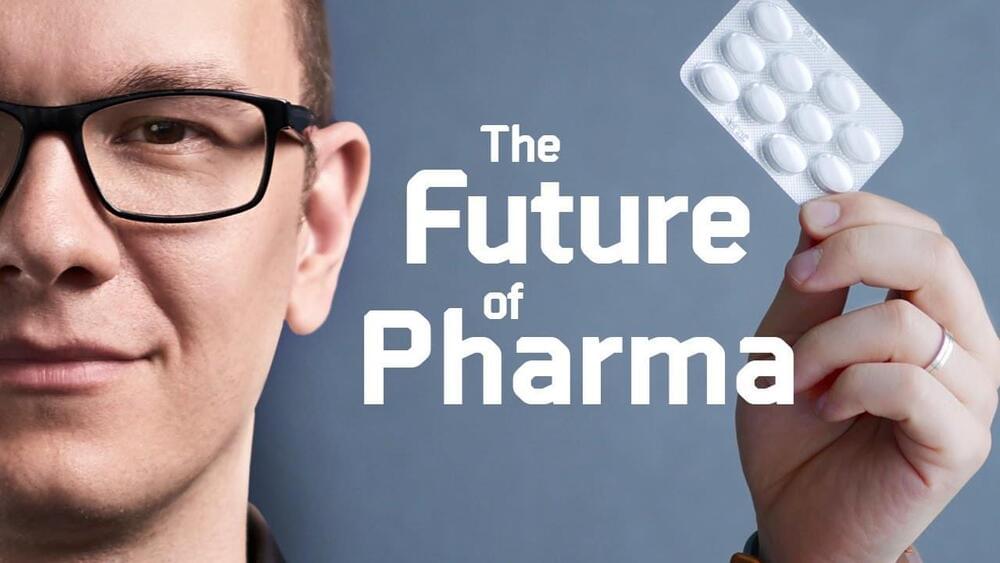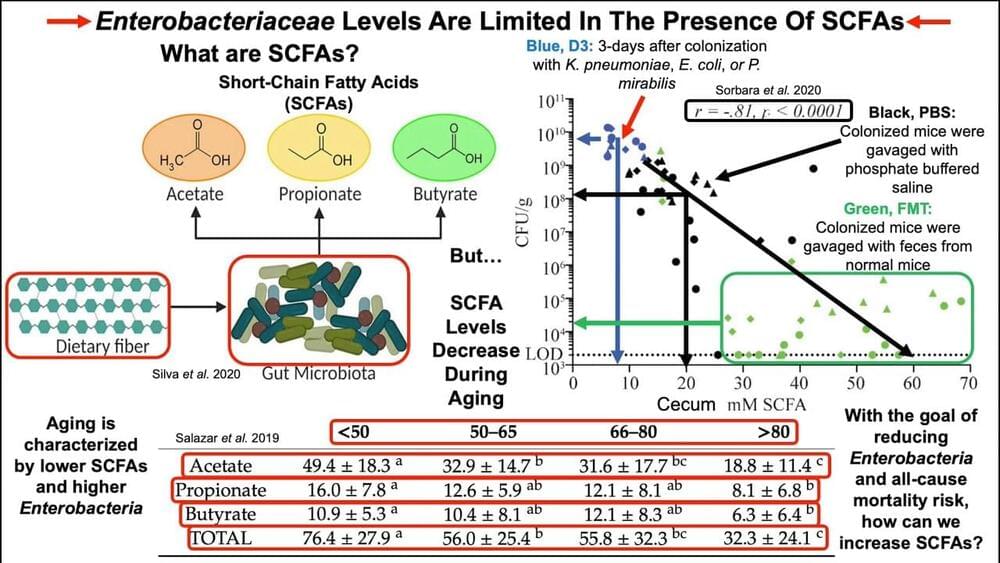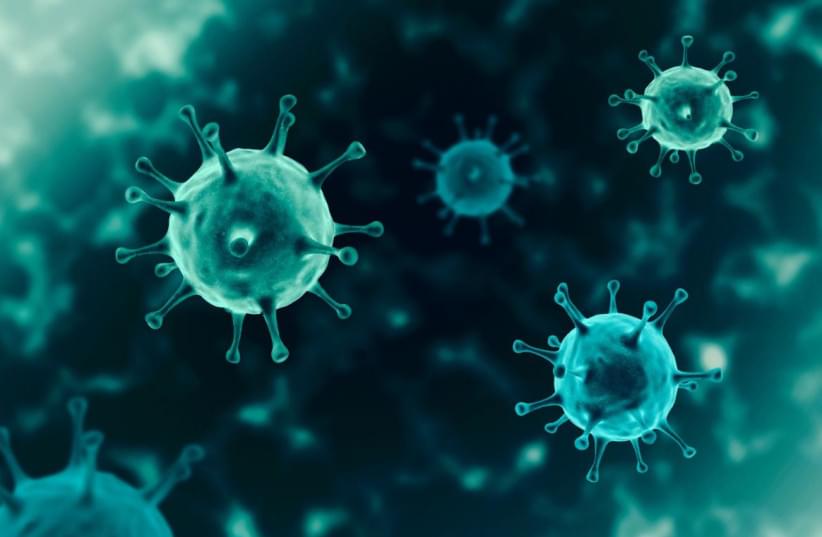COVID cases across the country rose by nearly 18% this week.



A team of scientists found an unusual trick for growing bigger, heartier crops: inserting a human gene related to obesity and fat mass into plants to supersize their harvest.
Augmenting potatoes with the human gene that encodes a fat-regulating protein called FTO, which essentially alters the genetic code to rapidly mass-produce proteins, made otherwise identical potato plants grow crops that were 50 percent larger, Smithsonian Magazine reports. By growing more food without taking up more space for agriculture, the scientists say their work could help fight global hunger — without adding to its climate impact.
“It [was] really a bold and bizarre idea,” University of Chicago chemist Chuan He, coauthor of a paper published in Nature Biotechnology, told Smithsonian. “To be honest, we were probably expecting some catastrophic effects.”


A team of researchers may have found an antibody that can neutralize all known novel coronavirus strains, including the developing variants.
GlaxoSmithKline and Vir Biotechnology recently conducted a huge collaborative study by scientists and developed a new antibody therapy, called Sotrovimab. During the project, they discovered a new natural antibody “that has remarkable breadth and efficacy,” according to the Berkeley Lab.
The scientists reportedly discovered a new antibody, called S309, which “neutralizes all known SARS-CoV-2 strains — including newly emerged mutants that can now ‘escape’ from previous antibody therapies — as well as the closely related original SARS-CoV virus,” according to a press release from the Berkeley Lab.

Favorite part at 19:06, Bioinformatics with Rutgers University attacking the hallmarks of aging.
#genetherapy, #immortality, #bioinformatics.
Awesome Health Podcast Episode 155
According to this episode’s guest: Liz Parrish, people should be demanding access to the latest gene therapy treatments.
According to Liz, effective gene therapy that treats and heals a plethora of diseases could be in place today if not for the human race’s mistakes in prioritizing our funds. Trillions of dollars have been invested in war machines, for example, when we could have used that money to advance humanity into a healthier, more productive, and enjoyable way of life.
As you can see, Liz thinks big — but she’s not only a dreamer — Liz is a doer.
As the Founder and CEO of BioViva, Liz devotes her life to pursuing scientific advancements that extend healthy lifespans in humans using cell technologies.
Liz will tell you that aging is a disease caused by cell damage over time. Her company uses BioInformatics to gain knowledge through collecting, storing, and analyzing data from clinical studies. Liz advocates for overhauling the U.S. medical system so that drugs proven successful in animal trials can be offered more rapidly to human patients. Our aging population needs urgent healthcare.
As a passionate science evangelist, Liz is a popular speaking guest. She serves as a motivational speaker in the life sciences field and is a strong proponent of advancing regenerative medicine modalities. She enjoys educating laypeople about the promising field of gene therapy and is actively involved in international educational media outreach.

Pioneering mouse study offers new therapeutic avenues for reducing visceral fat stores, which have been associated with cardiovascular disease and multiple types of cancer.
Obesity has been linked to no less than 13 cancers, including the two most prevalent (breast and colorectal), as well as to cardiovascular disease, which remains a leading cause of death worldwide.
The most harmful type of obesity is caused by the excessive accumulation of so-called “deep” fat. Contrary to fat stores located directly under the skin, deep, or “visceral,” fat stores reside inside our abdominal cavity, where they envelop vital organs. In normal amounts, visceral fat supports various fundamental functions, such as reproduction. However, when it is too abundant, it produces unhealthy levels of proteins and hormones that negatively affect neighboring tissues and organs.
Nad plus works for alzheimers.
In June of 2,018 the World Health Organization (WHO) released the 11th edition of its International Classification of Diseases, and for the first time added aging.1 The classification of aging as a disease paves the way for new research into novel therapeutics to delay or reverse age-related illnesses such as cancer, cardiovascular and metabolic disease, and neurodegeneration.2,3 Nutrient sensing systems have been an intense focus of investigation, including mTOR (the mammalian target of rapamycin) for regulating protein synthesis and cell growth; AMPK (activated protein kinase) for sensing low energy states; and sirtuins, a family of seven proteins critical to DNA expression and aging, which can only function in conjunction with NAD+ (nicotinamide adenine dinucleotide), a coenzyme present in all living cells.4
Across the kingdom of life, an increase in intracellular levels of NAD+ triggers shifts that enhance survival, including boosting energy production and upregulating cellular repair.5 In fact, the slow, ineluctable process of aging has been described as a “cascade of robustness breakdown triggered by a decrease in systemic NAD+ biosynthesis and the resultant functional defects in susceptible organs and tissues.”6 Aging is marked by epigenetic shifts, genomic instability, altered nutrient sensing ability, telomere attrition, mitochondrial dysfunction, cellular senescence, stem cell exhaustion, and dysregulated intercellular communication.7,8
By middle age, our NAD+ levels have plummeted to half that of our youth.9 Numerous studies have demonstrated that boosting NAD+ levels increases insulin sensitivity, reverses mitochondrial dysfunction, and extends lifespan.10,11 NAD+ levels can be increased by activating enzymes that stimulate synthesis of NAD+, by inhibiting an enzyme (CD38) that degrades NAD+, and by supplementing with NAD precursors, including nicotinamide riboside(NR) and nicotinamide mononucleotide (NMN).12,13 A conceptual framework called NAD World, formulated over the last decade by developmental biologist Shin-ichiro Imai, MD, PhD, of Washington University School of Medicine, posits NMN as a critical, systemic signaling molecule that maintains biological robustness of the communication network supporting NAD+.6.

The global revenue of the pharmaceutical market is 1.2 trillion dollars. With such capital at stake and with the pace of technological disruption, the pharma industry has to embrace new technologies, therapies, and innovations and put a greater focus on prevention and digital health.
In this video, we take a dive into the five trends of how big pharma will adapt to these changing times:
1. Artificial intelligence for drug research and development.
2. Patient design — DIY medicine movements.
3. In silico trials to bypass in vivo clinical testing.
4. New technologies, such as blockchain, in the supply chain.
5. New drug strategies by big pharma companies.
Get access to exclusive content and express your support for The Medical Futurist by joining our Patreon community: https://www.patreon.com/themedicalfuturist.
Read our magazine for further updates and analyses on the future of healthcare:
https://medicalfuturist.com/magazine.
#pharmaceutics #digitalhealth #pharma

Join us on Patreon!
https://www.patreon.com/MichaelLustgartenPhD
Papers referenced in the video:
Human microbiome: an academic update on human body site specific surveillance and its possible role.
https://pubmed.ncbi.nlm.nih.gov/32524177/
Taxonomic signatures of cause-specific mortality risk in human gut microbiome.
https://pubmed.ncbi.nlm.nih.gov/33976176/
The Role of Short-Chain Fatty Acids From Gut Microbiota in Gut-Brain Communication.
https://pubmed.ncbi.nlm.nih.gov/32082260/
Inhibiting antibiotic-resistant Enterobacteriaceae by microbiota-mediated intracellular acidification.
https://pubmed.ncbi.nlm.nih.gov/30563917/
Short chain fatty acids in human large intestine, portal, hepatic and venous blood.
https://pubmed.ncbi.nlm.nih.gov/3678950/
Age-Associated Changes in Gut Microbiota and Dietary Components Related with the Immune System in Adulthood and Old Age: A Cross-Sectional Study.
https://pubmed.ncbi.nlm.nih.gov/31370376/

A new coronavirus variant, C.1.2, has been detected in South Africa and a number of other countries, with concerns that the variant could be more infectious and evade vaccines, according to a new preprint study by South Africa’s National Institute for Communicable Diseases and the KwaZulu-Natal Research Innovation and Sequencing Platform. The study is awaiting peer review.
The C.1.2 variant first detected in South Africa is more mutated compared to the original virus than any other known variant.